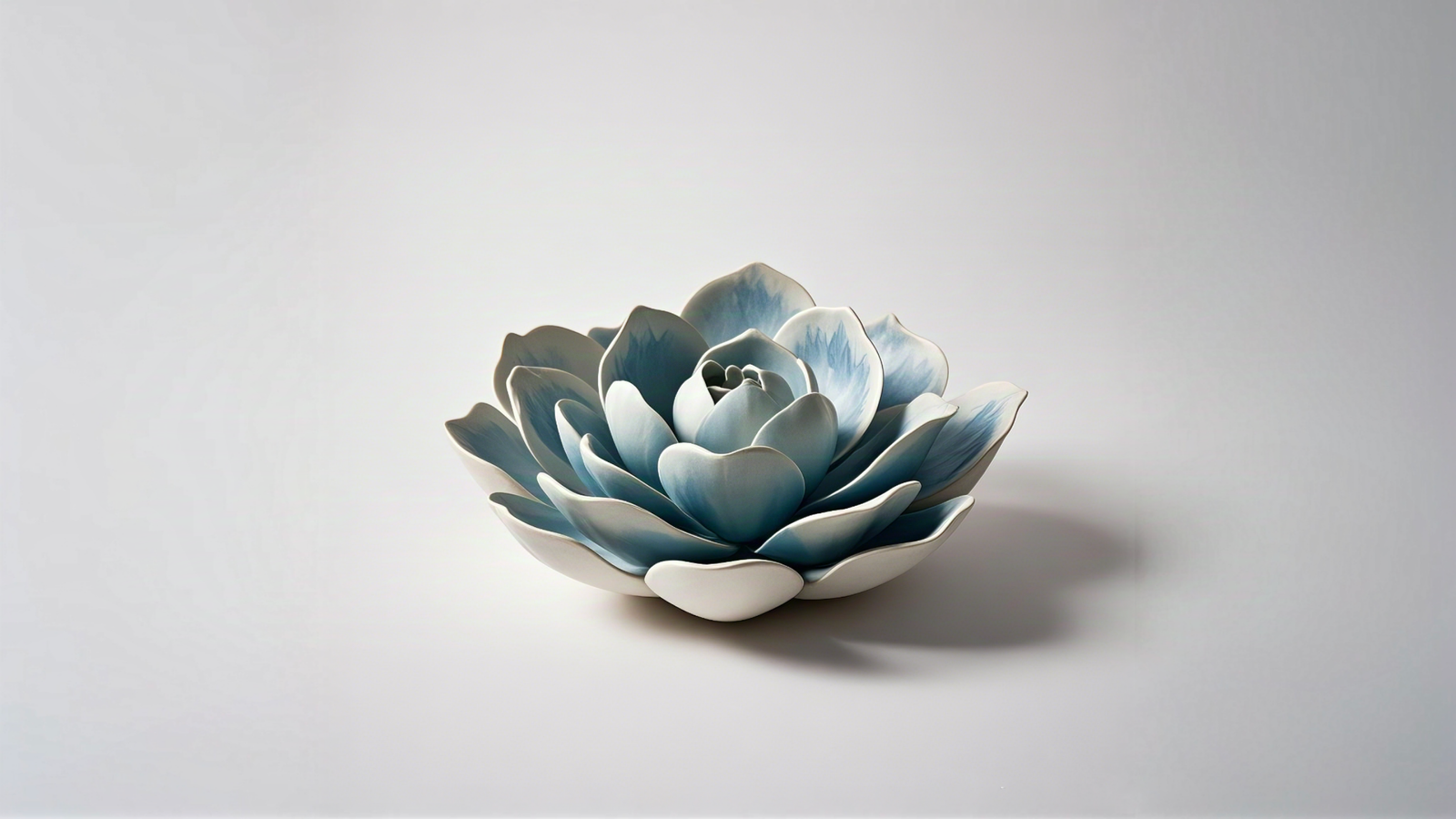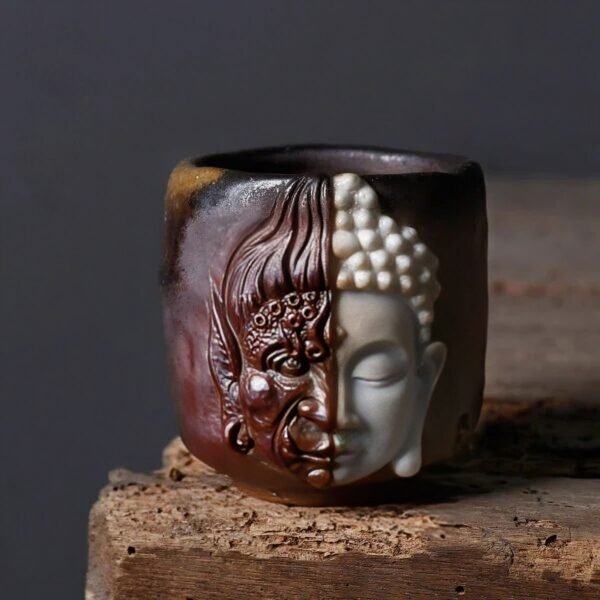A Cup of Tea and a Thought
The mug in my hand was smooth, white, perfect. A factory creation. Then, my eyes wandered to a photograph on the wall—a Greek amphora, chipped at the edges, its painted warriors locked in battle. Two vessels, separated by thousands of years, yet born from the same earth. One sculpted by hand, the other by machine. And so, the question: what have we gained? What have we lost?
Zen Tenmoku Cup – One-of-a-Kind Handcrafted Series| Large Wood-Fired Cup
Height: 7cm
Diameter: 7.3cm
Shape and Story
Ancient pottery speaks. A Tang Dynasty vase—slender, ghostly white, dragons swirling around its belly. A Mesopotamian jar—thick-walled, its surface rough with the imprint of fingers that shaped it. They are not perfect, but they are alive.
Modern ceramics, on the other hand, are refined. A vase with sharp, precise edges. A jar in muted gray, mathematically symmetrical. They don’t tell stories; they hold space. The old world valued expression, the new world values control. But control is not always a bad thing—our Vases & Jars collection walks the line between the two.
The Making of Clay and Time
“Back then, they had no machines,” my father once said, flipping through a book on ancient crafts. “Just hands, fire, and patience.”
The potter of old worked in rhythms—wet clay spinning on a wheel, the slow rise of a form beneath steady fingers. Kilns were unpredictable, their heat dictated by wood and wind. A single mistake, and days of work could crumble into dust.
Today, precision reigns. Machines press clay into flawless molds. Kilns hum with electric certainty, firing at exact temperatures. The result? Ceramics that are stronger, more uniform. Yet, in our Vases & Jars, we keep a whisper of the past. Some pieces bear the touch of a craftsman’s hand, a reminder that perfection is not always the goal.
Function: Then and Now
A thousand years ago, a ceramic jar held grain, oil, water—life itself. Egyptian amphorae lined the banks of the Nile, storing provisions for the afterlife. A Greek kylix bore wine to the lips of philosophers.
Now, a vase is decor. A jar sits empty, save for a few stray coins. Function has shifted. But in the right light, even a modern ceramic can feel ancient. A vase catching the morning sun. A jar, cool and heavy in your hands. Our Vases & Jars embrace this duality—useful, but not merely useful.
Color and Finish: Earth’s Palette vs. Man’s Design
Ancient potters worked with what the land provided. Jomon pots from Japan—earthy brown. Indus Valley ceramics—bold reds and blacks. Early Chinese porcelain—soft celadon, the color of mist over water.
Modern ceramics are bolder. A vase the color of a neon cityscape. A jar so polished it could be a mirror. The old world blended with nature; the new world reinvents it. Our Vases & Jars walk both paths—some pieces raw and organic, others smooth as glass.
Wabi-Sabi Retro Pottery Vase – Taisu Series| Handcrafted Antique Style
one percent clay Wabi-Sabi Retro Pottery Vase – Taisu Series
White-gray earthen texture echoes ancient weathered artifacts, with brown patina accenting the passage of time. A handcrafted masterpiece—place it indoors to feel the raw beauty of nature and the whispers of time.
Durability: Strength in Fire
“Ancient pottery is fragile,” a friend once said, eyeing a museum display. “Not always,” I replied. “It survived centuries, didn’t it?”
Thick, heavy, fired in unpredictable kilns—old ceramics were sturdy, though time left them cracked. Modern ceramics are lighter, stronger, engineered to last. Our collection embraces both ideals—vases that stand tall, jars that endure.
Time and the Hands That Shape It
A Greek vase took weeks to complete. Clay shaped, left to dry, fired, painted, fired again. A slow, deliberate process.
Today, a machine can produce a vase in minutes. But is speed always better? Our Vases & Jars capture something in between—quick to ship, easy to love, yet touched by hands that respect the patience of the past.
Makers, Then and Now
In ancient China, a potter might spend a lifetime perfecting his craft. In Rome, workshops passed secrets through generations. Every piece bore the soul of its maker.
Now, most ceramics are mass-produced. But not all. Some are still shaped by artisans who learned from those before them. In our Vases & Jars, that legacy continues.
Why It Still Matters
A Greek urn in a museum. A porcelain cup in your hand. One belongs to history, the other to the present. But both come from the same place—earth, fire, human touch.
Our Vases & Jars collection bridges these worlds. Some pieces feel ancient, some feel new, but all share a story as old as time. Choose one. Place it in your home. Let it hold more than just flowers—let it hold a connection to something bigger than today.




